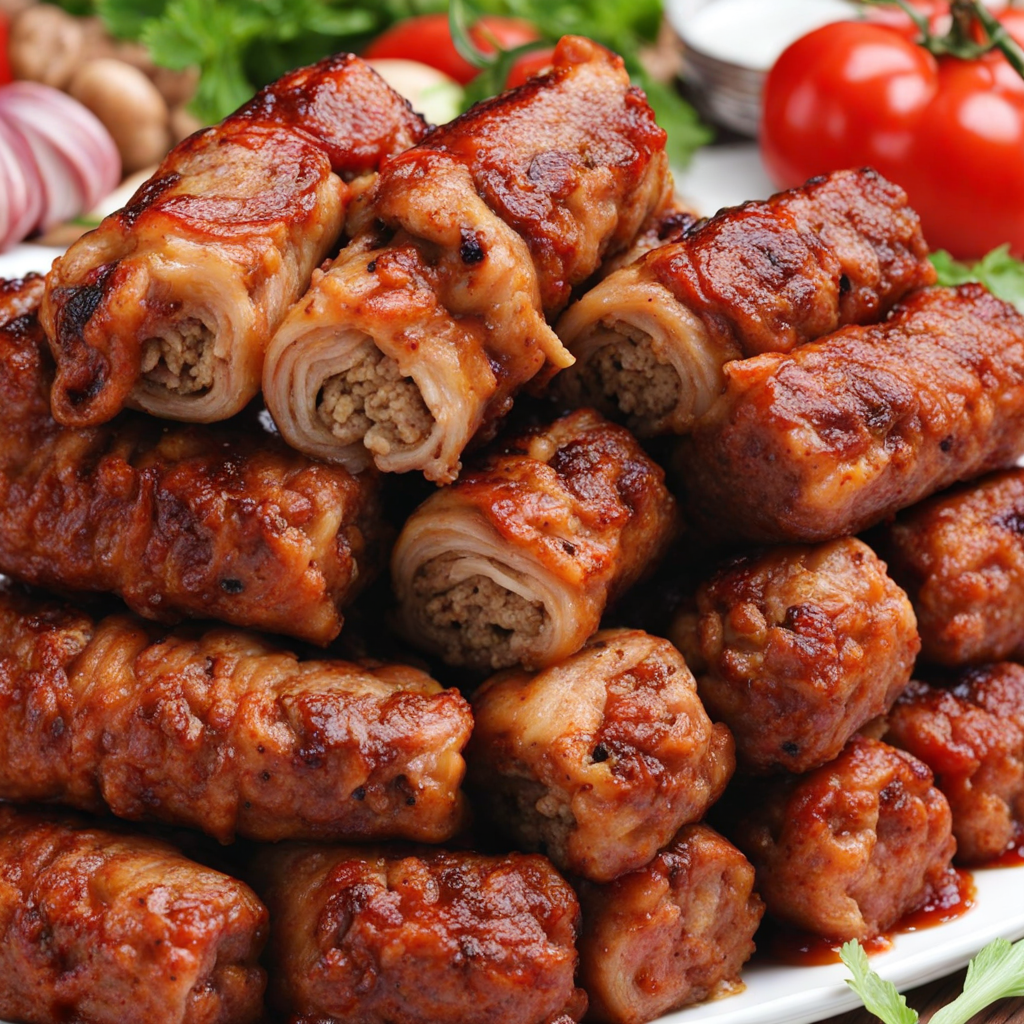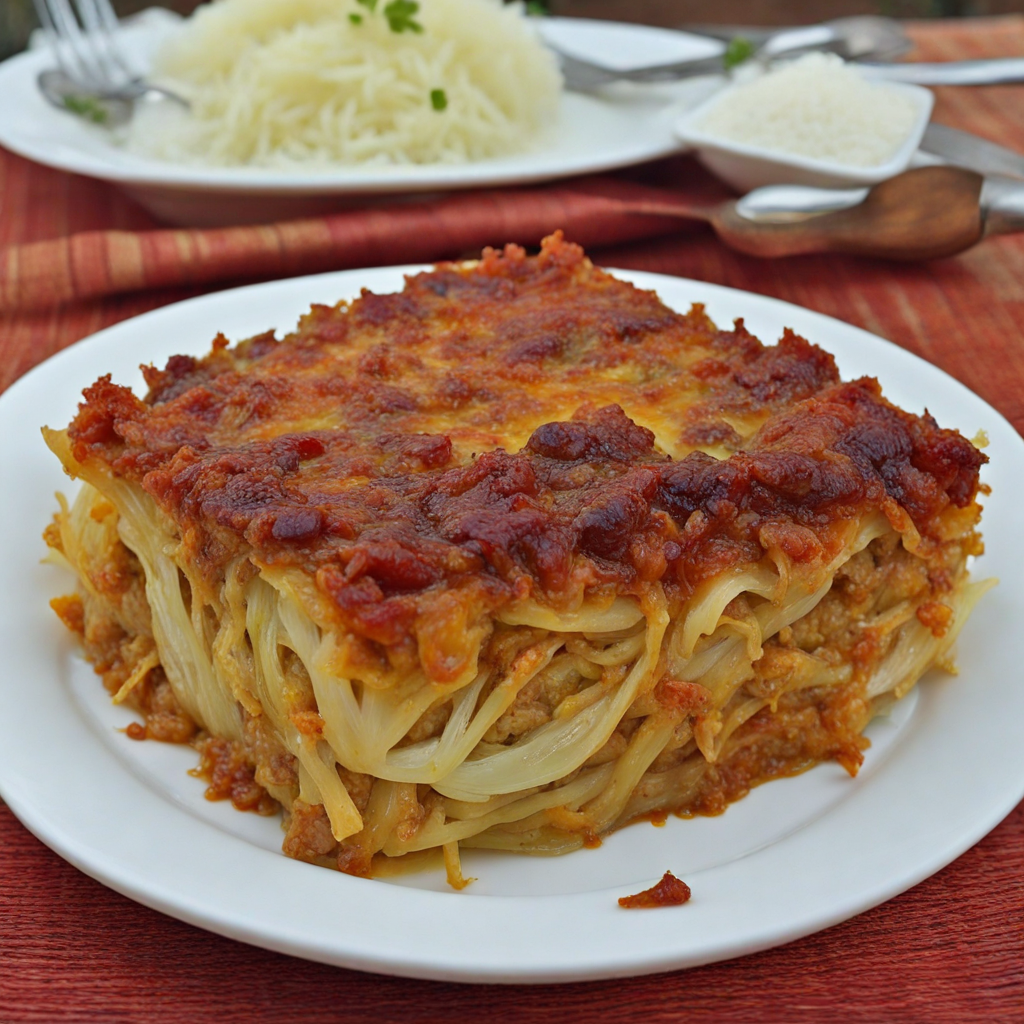Gogoși
Gogoși are delightful Romanian doughnuts that offer a unique twist on a classic treat. Typically made from a rich, yeasted dough, these pastries are soft and pillowy on the inside, with a slightly crispy exterior. The dough is often flavored with a hint of vanilla or zest from citrus fruits, which adds a refreshing note to each bite. Traditionally, gogoși are deep-fried to achieve that perfect golden-brown color, creating a satisfying crunch that gives way to a fluffy center, making them an irresistible snack or dessert. These indulgent treats can be enjoyed plain or dusted with a generous coating of powdered sugar. However, what sets gogoși apart is their versatility in fillings. They can be stuffed with a variety of delicious options, such as sweet jams, creamy custards, or even chocolate, catering to different taste preferences. Some modern variations even include savory fillings, showcasing the adaptability of this beloved pastry. The contrast between the warm, fried outer layer and the sweet, gooey interior creates a mouthwatering experience that is sure to please anyone trying them for the first time. Gogoși are often enjoyed during special occasions or festivals, making them a cherished part of Romanian culinary traditions. They are best served fresh, straight out of the fryer, and are perfect for sharing with friends and family. Pairing them with a cup of coffee or tea enhances the experience, making them an ideal accompaniment for a cozy gathering. Whether you encounter them at a local market or try your hand at making them at home, gogoși promise a delightful journey into the flavors of Romania that is both comforting and satisfying.
How It Became This Dish
The History of Gogoși: Romania's Delightful Doughnuts #### Origins Gogoși, the beloved Romanian doughnuts, boast a rich and intriguing history that intertwines with the cultural tapestry of Eastern Europe. While the exact origins of gogoși are difficult to pinpoint, many food historians trace their roots back to the early 19th century, when they became a popular treat in Romania. The word "gogoșă" itself is derived from the Hungarian term "gogos," which means "puffed," reflecting the doughnut's light, airy texture. The basic components of gogoși—flour, sugar, eggs, and yeast—are common in many cultures, but the Romanian version has developed a unique identity through local ingredients and preparation methods. In the past, these doughnuts were often made with sour cream or milk, giving them a rich flavor and tender crumb. Traditional gogoși are typically deep-fried, resulting in a golden-brown exterior that contrasts beautifully with their soft, fluffy interior. #### Cultural Significance Gogoși hold a special place in Romanian culture, symbolizing hospitality, celebration, and community. They are often served during family gatherings, religious holidays, and special occasions, such as weddings and birthdays. The preparation of gogoși is frequently a communal activity, with families coming together to make large batches. This practice fosters a sense of togetherness and continuity, as recipes are passed down through generations. In Romania, gogoși are not merely a dessert; they are a cultural artifact that encapsulates the warmth of home and the joy of shared experiences. They are often enjoyed with a cup of coffee or tea, making them a staple of social gatherings. Street vendors selling gogoși can be found at fairs and festivals, where the smell of frying dough wafts through the air, enticing passersby and creating a festive atmosphere. #### Development Over Time As Romania underwent significant political, social, and economic changes throughout the 20th century, so too did the humble gogoșă. During the communist era, access to ingredients was limited, which led to creative adaptations of the traditional recipe. Bakers began to experiment with available substitutes, such as using potato or cottage cheese to enrich the dough. Despite these challenges, gogoși remained a cherished comfort food, adapting to the times while retaining their core essence. The fall of communism in 1989 marked a new chapter for Romanian cuisine, including gogoși. With increased access to diverse ingredients and culinary influences from around the world, bakers began to innovate. New flavors and fillings emerged, ranging from classic options like jam and chocolate to more contemporary choices like Nutella and fruit preserves. This evolution reflects Romania's growing culinary scene, where traditional foods are celebrated but also open to reinterpretation. In recent years, gogoși have experienced a renaissance, as younger generations rediscover the joys of traditional cooking. Food bloggers and social media influencers are shining a spotlight on Romanian cuisine, showcasing gogoși in all their glory. This resurgence has led to the establishment of specialized bakeries and cafes dedicated solely to this delightful treat, offering a variety of flavors and styles that cater to modern tastes. #### Regional Variations Romania's diverse landscape has given rise to various regional variations of gogoși, each with its unique twist. In Transylvania, for example, gogoși may be filled with sweet cheese and topped with powdered sugar, while in the Moldavian region, they might be enjoyed with a dollop of sour cream or fruit compote. These regional differences not only highlight the adaptability of the dish but also reflect the rich cultural identities within Romania itself. In addition to the traditional gogoși, there are also variations that incorporate local ingredients or flavors. Some bakers infuse their dough with spices like cinnamon or cardamom, while others may experiment with glazes or toppings made from local fruits, nuts, or chocolate. This creativity further enhances the gogoși experience, transforming it into a canvas for culinary expression. #### Gogoși in Contemporary Culture Today, gogoși continue to be a beloved staple of Romanian cuisine, enjoyed by people of all ages. They are often featured in festive celebrations, including Christmas and Easter, symbolizing the spirit of joy and togetherness. In recent years, gogoși have also gained international recognition, with Romanian expatriates and food enthusiasts sharing their love for these doughnuts across the globe. The rise of food tourism has also played a role in popularizing gogoși. Visitors to Romania are often eager to indulge in local delicacies, and gogoși are a must-try item on many culinary itineraries. As more people discover the delightful taste and cultural significance of gogoși, they have begun to appreciate the stories and traditions that accompany this seemingly simple treat. #### Conclusion Gogoși are more than just a sweet indulgence; they are a reflection of Romania's rich cultural heritage and history. From their humble beginnings to their modern adaptations, gogoși have endured, evolving with society while remaining a cherished symbol of community and celebration. As Romania continues to embrace its culinary roots, gogoși will undoubtedly remain a beloved staple, capturing the hearts and taste buds of generations to come. In a world where culinary traditions are often overshadowed by globalization, gogoși stand as a testament to the power of food to connect people, evoke memories, and celebrate the richness of culture. Whether enjoyed at a bustling festival, a cozy family gathering, or a trendy café, gogoși will always hold a special place in the heart of Romanian cuisine—and in the hearts of those who cherish them.
You may like
Discover local flavors from Romania







